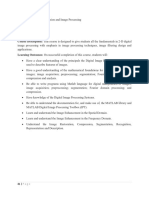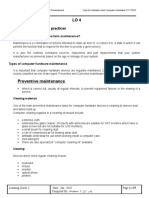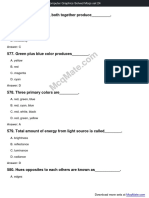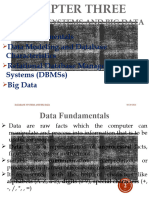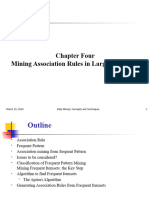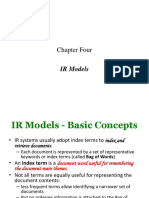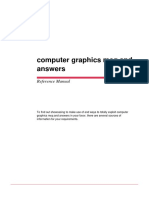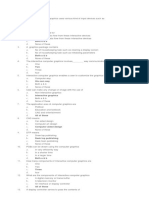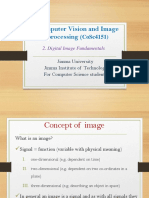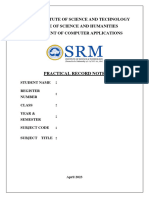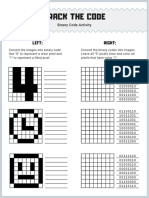0% found this document useful (1 vote)
141 views64 pagesSpatial Domain Image Processing
This document discusses spatial domain image processing and enhancement techniques. It covers:
1. Spatial domain processing operates directly on pixel values, where the output value at each point is a function of neighboring input pixel values.
2. Basic intensity transformation functions include image negatives, log transformations, power-law (gamma) transformations, and piecewise-linear transformations like contrast stretching and intensity slicing.
3. Histogram processing techniques like histogram equalization are used to improve image contrast by transforming the image to have a nearly uniform histogram distribution.
Uploaded by
Getachew Yizengaw EnyewCopyright
© © All Rights Reserved
We take content rights seriously. If you suspect this is your content, claim it here.
Available Formats
Download as PDF, TXT or read online on Scribd
0% found this document useful (1 vote)
141 views64 pagesSpatial Domain Image Processing
This document discusses spatial domain image processing and enhancement techniques. It covers:
1. Spatial domain processing operates directly on pixel values, where the output value at each point is a function of neighboring input pixel values.
2. Basic intensity transformation functions include image negatives, log transformations, power-law (gamma) transformations, and piecewise-linear transformations like contrast stretching and intensity slicing.
3. Histogram processing techniques like histogram equalization are used to improve image contrast by transforming the image to have a nearly uniform histogram distribution.
Uploaded by
Getachew Yizengaw EnyewCopyright
© © All Rights Reserved
We take content rights seriously. If you suspect this is your content, claim it here.
Available Formats
Download as PDF, TXT or read online on Scribd
/ 64




